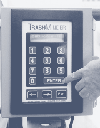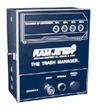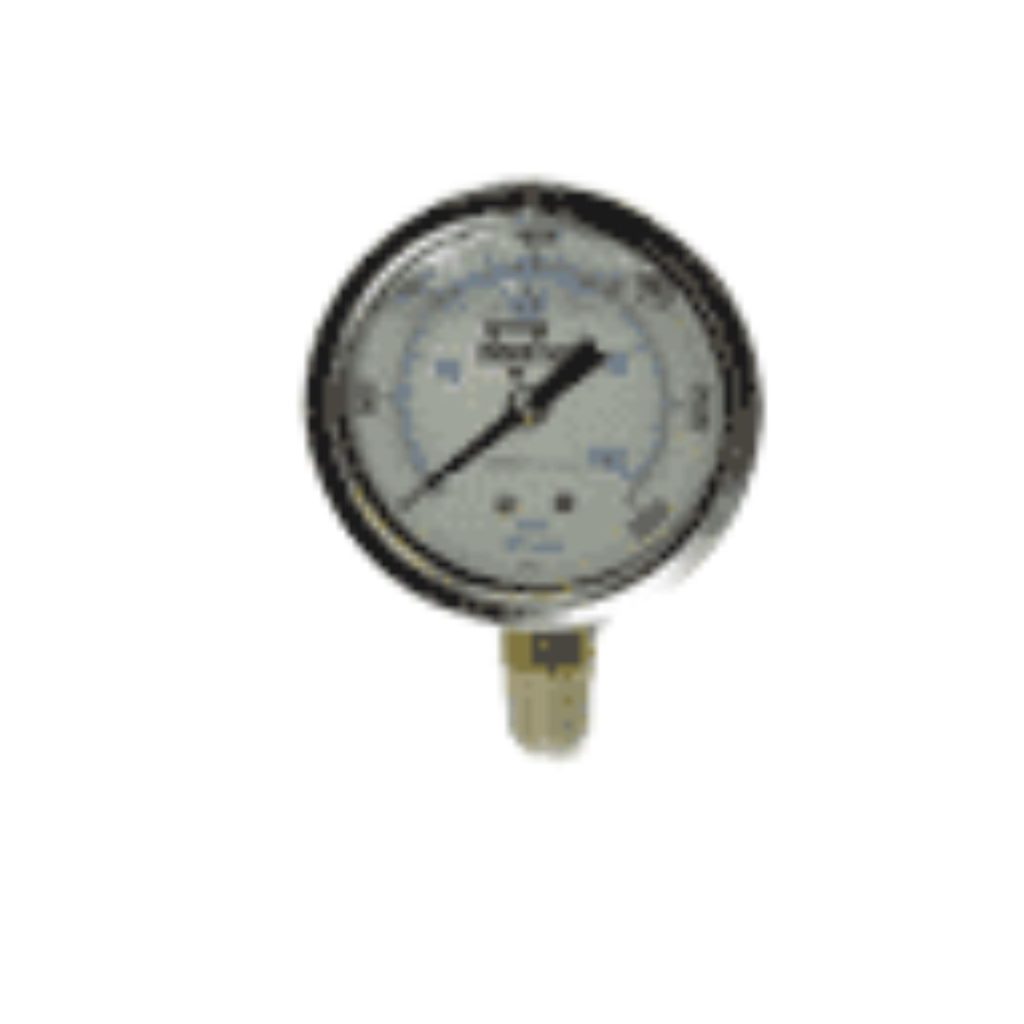

The Trash Manager is a specialized system designed to optimize compactor performance, delivering significant value to customers who are focused on increasing their recycling efforts or managing the rising costs of waste disposal. By improving the efficiency of compaction, this system enhances the overall return on investment, especially for facilities seeking to minimize haul-offs or reduce container exchange frequency.
At the core of the Trash Manager's advantage is its unique approach to applying compaction force. Unlike conventional systems that rely on a basic pressure switch triggered by a short-lived pressure spike—often resulting in premature shutdown and a false “full container” alert—the Trash Manager exerts full compaction force for a sustained period of up to one full minute. This prolonged pressure application allows for deeper, more thorough compaction, maximizing the amount of waste that can be stored in a single container and reducing unnecessary hauls. This method ensures that the refuse is subjected to the machine’s full compaction force well beyond the fleeting moment typical in traditional setups, leading to better material density and improved container utilization.
To further capitalize on this high-performance compaction process, the Trash Manager features a progressive indicator light system built into the compactor. Four strategically timed indicator lights illuminate to show when the container is approximately 70%, 80%, 90%, and finally 100% full. This tiered notification system provides operators with clear, actionable data, helping them plan waste management more effectively and avoid overfilling or underutilizing the compactor. Unlike standard systems that rely on imprecise pressure spikes, the Trash Manager uses intelligent sensors to measure hydraulic back pressure—the resistance force from the compacted refuse pushing back against the ram face after its forward motion has stopped.

The Pressure Gauge is a fluid-filled, high-visibility instrument engineered to provide accurate and consistent monitoring of the compactor’s hydraulic system pressure. It includes 15 feet of heavy-duty hydraulic hose, offering flexibility in installation. This allows the gauge to be mounted close to the packer’s push-button control station for convenient access, or on the power pack itself if a remote setup is in use. The gauge plays a critical role in displaying the system’s pressure levels, which gradually increase as the container fills. By observing these pressure changes, operators can determine when the compactor is nearing its “packed out” state, helping to maximize load efficiency while avoiding unnecessary compaction cycles.
For enhanced operational clarity, an optional Dual Needle Pressure Gauge is available. This upgraded version features two distinct needles, making it easier for operators to track and compare pressure readings at a glance. This is particularly beneficial in high-demand environments where quick assessments are required for safety and efficiency. Both versions of the gauge are designed to perform reliably under tough industrial conditions, providing accurate feedback and contributing to smoother, more informed waste handling operations.


Mark Costello has been a trusted name in waste management for decades, delivering reliable and effective solutions that businesses count on.
Using the latest technology, We ensures that waste management systems are efficient and up to industry standards, from food digesters to compactors.
At Mark Costello,we provides tailored waste management solutions that fit each business’s unique needs, ensuring a smooth integration into existing operations.
Mark Costello is dedicated to helping businesses achieve their sustainability goals by turning waste into valuable resources, supporting a greener future.
Send us a message with your questions or concerns and our team member will contact you. We’d love to hear from you.
A Container Fullness Measuring System is designed to monitor how full a waste compactor or container is by tracking pressure or ram force during compaction. These systems use sensors and advanced processing to analyze compactor behavior and determine when a container is approaching full capacity. For example, Mark-Costello’s TrashMinder® system uses hydraulic pressure data to trigger alerts when the container reaches a predetermined fullness level. This allows facility managers to schedule pickups more efficiently and avoid unnecessary hauls of partially filled containers.
Mark-Costello offers several models of TrashMinder®, each tailored for different communication preferences and facility needs. The 100P model sends a fullness alert via pager, while the 110F uses a fax machine to notify staff when the container is full. The 150MS model connects to a computer for direct notification, and the 300 model goes a step further by monitoring both container fullness and compactor usage, relaying this data to a PC. Additionally, models like the 200S and 250MS are designed to track user access and can integrate with billing systems for tenant-based usage management.
Yes, some of these systems are equipped with usage monitoring and access control features. This is especially useful in shared facilities, such as apartment complexes or commercial buildings. Certain TrashMinder® models and the Keymaster Meter System can restrict access by requiring an ID number, magnetic card, or digital key. This not only helps prevent unauthorized use but also enables facility managers to assign accountability and charge specific users or tenants based on actual compactor usage. It’s a practical solution for keeping operational costs fair and transparent.
One of the advantages of the TrashMinder® system is its scalability. A single system can monitor up to 4,000 compactors from a central computer. This makes it ideal for large facilities, waste management companies, or property managers overseeing multiple locations. With this level of capacity, managers can maintain control over their waste handling operations and receive consistent data across multiple units without needing separate systems for each compactor.
Mark-Costello also offers a variety of alternative fullness monitoring solutions for facilities that may not need the full features of the TrashMinder®. Options include the Trash Manager, which uses a four-light system to indicate fullness levels at 70%, 80%, 90%, and 100% by reading hydraulic pressure. There’s also the Full Container Light, which turns on when the system reaches shutdown pressure, and the Advanced Warning Light, which provides a visual alert before the container is completely full. For simpler needs, fluid-filled pressure gauges—including dual-needle options—allow staff to visually check pressure levels manually.
Using a container fullness measuring system can lead to significant cost savings by reducing unnecessary pickups of partially filled containers. These systems ensure that haulers are only dispatched when containers are genuinely near capacity. That means fewer pickup fees and better resource allocation. Furthermore, with detailed logs of fullness and usage data, managers can verify hauler billing accuracy and identify opportunities to optimize compactor usage. Over time, this technology not only saves money but also contributes to better planning and more sustainable waste management practices.
